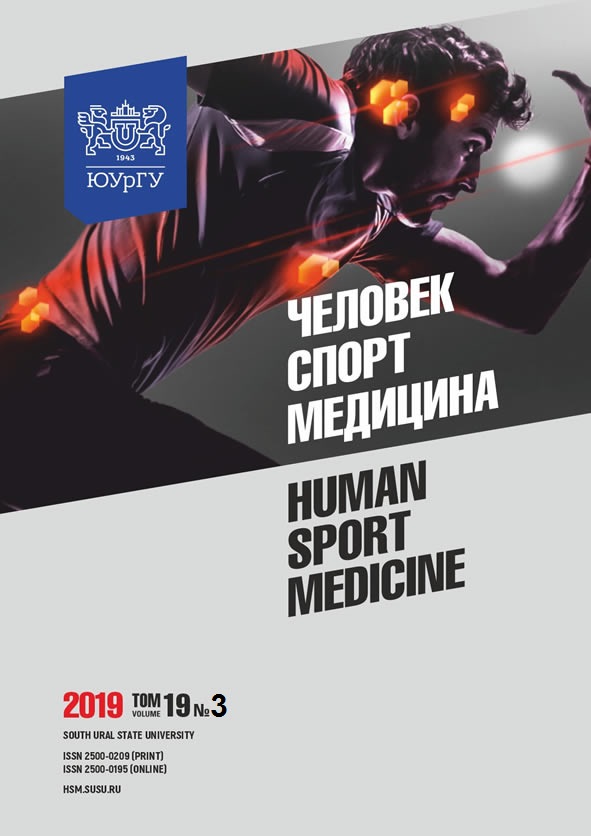MORPHOLOGICAL MARKERS OF THE POST EXERCISE STRUCTURAL AND FUNCTIONAL DISORDERS OF THE LOCOMOTOR APPARATUS
Abstract
Aim. The article deals with establishing the character of the correlations between the somatometrical features and morphological signs of connective tissue dysplasia in persons with frequent post exercise structural and functional disorders of the locomotor apparatus. This is required for creating treatment and disease preventive measures and recommendations to choose
an adequate physical activity. Materials and methods. A comprehensive medical and anthropological examination of 48 people aged from 18 to 47 years (mean age 36.38 ± 6.02 years) with frequent post exercise structural and functional disorders of the locomotor apparatus was carried out. A questionnaire was developed to assess the status of their connective tissue. The control group consisted of 36 apparently healthy people aged 18.85 ± 0.56 years. Statistical processing of the data obtained was performed using Microsoft Excel 2010. Results. All patients with frequent post exercise structural and functional disorders of the locomotor apparatus had connective tissue dysplasia of moderate and severe degree, the total score of which was 49.44 ± 13.1.
The analysis of the frequency of connective tissue dysplasia morphological signs occurrence depending on their diagnostic significance, made it possible to establish the pathognomonic predictors of high susceptibility to frequent disorders of the locomotor apparatus. Conclusion. Early diagnostics of frequent disorders of the locomotor apparatus will contribute to timely preventive measures in terms of physical load and a corresponding rehabilitation for eliminating the development of the main disorder.
References
References on translit
Copyright (c) 2019 Human. Sport. Medicine

This work is licensed under a Creative Commons Attribution-NonCommercial-NoDerivatives 4.0 International License.















